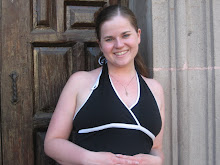So, here in the South, we’ve had a few rough years the last few years. This year has been better, however. But, I’m still a little leary of planting plants that require excessive watering as we never know what Mother Nature has in store for us! So, I keep my eyes out for drought-tolerant plants. And, what I’ve found is that many of the drought-tolerant plants are actually plants that were found in cottage gardens back in the day. This actually makes sense when you think about it; settlers didn’t want to spend their time, manpower, and water on flower gardens when it was more productive for the family to grow food (flower gardens were not popular till the 1800s and started as cutting flower gardens).
Lavender (lavandula)
This is a great smelling (very fragrant) plant. There are many varieties including English, French, Munstead, etc. Lavender also comes in more colors than simply purple as one might expect; you can find it in blue, lavender/purple, and even white. I just planted some this year that I bought from a local nursery and bought Lavender Munstead seeds for next spring to have more lavender in my upcoming cottage garden.
Yarrow (full sun perennial, but not the prettiest in my book) – grows to 4ft. This isn’t a plant I have in my garden, but perhaps in the future.
Agastache (full sun perennial; grows up to 4ft)
Sages (eg Russian Sage, Meadow Sage, Mojave Sage) – Some have silvery foliage (e.g. Russian Sage, and the foliage color reminds me of my favorite plant – dusty miller). Depending on the variety, size will vary. Some are shorter (Meadow and Mojave) reaching just shy of 3ft, while others are larger (Russian; up to 6ft).
Salvia (Full sun; up to 3ft) – this is a great plant available in a variety of colors though commonly found in reds and pinks.
Lamb’s Ear (up to 18” tall). Depending on the variety you get different size leaves. The common variety that was found here in the area had smaller leaves (we have lots of this in our yard including the border of our cottage garden). Lamb’s ear may have blooms in white, magenta, purple and potentially other colors in hybrids. At Park Seed’s Flower Day , I saw their Stachy’s Lamb’s Ear which has beautiful fuzzy large leaves that truly feel like a small lamb’s ear. It was a much more elegant variety than the common one, and I may one day have to add it to our yard as well once I graduate and have more income!
Penstemon (up to 18” tall; grows in full sun). This is a good choice if you’re interested in attracting butterflies or hummingbirds.
Blanket Flower (from the Gaillardia family). This is a tough plant that was also found in cottage gardens. I just bought some seed that I’m freezing to plant next spring so that I can add this to my little cottage garden.
Coneflowers – yay for Echinacea! I also got some of this from Park’s Flower Day as well. Coneflowers were also popular in cottage gardens … and I’m very excited to be adding this to my garden. Coneflowers remind me of droopy purple daisies (and daisies are one of my favorite plants … so it stands to reason that I’d enjoy cone flowers, too!)
Sedum (relatively small perennial; less than 3ft depending on the variety). Sedum is tough & drought resistant …. Very good if you’re still working on developing a green thumb :) Or, for those of you like me who are always on the go (and doing a PhD, one is Always doing something!) and sometimes neglect their plants because they’re busy running experiments.
So one thing you will notice with many of these plants is that they don’t have big showy leaves like those of the hydrangea. This helps them be more drought resistant as they have less surface area to loose water through. Also, you’ll find that the petals on drought resistant plants tend to be smaller for the same reason. I love my hydrangeas, but I can definitely tell you that they are by no means drought-resistant. Some summer evenings when I get home from work, I’ll drive up to a droopy front of the house with the 4 hydrangeas with all of their leaves drooping to the ground. They are fine the next morning once they’ve been watered, but wouldn’t last long-term without frequent watering! So, depending on which garden one talks about (especially if you’re afraid you might forget to water it!), these drought-resistant plants might be highly advantageous!
Thursday, July 2, 2009
Wednesday, July 1, 2009
Shade Happy Plants
As I've been looking for plants to fill my shade gardens, which are numerous due to the 10 fully mature pecan trees in our yard, I've collected this list. Hopefully it will help you out if you have the same issues that I have with finding plants to fill the shady spots :)
• Astillbe (Red, white, lavender, pink)
• Coral Bells (Heuchera)
• Ferns
• Lilly-of-the-valley
• Hardy PerennialLillis
• Forget-Me-Nots (6-8” tall w/ small blue flowers)
• Liriope (Be sure to put this in a sunk container or get a non-invasive
variety)
• Helleborus (Lenten Rose)
• English PrimRose
• Hydrangea (can be planted in full sun to full shade)
• Caldiums (annuals unless dug up and brought in for the winter)
• Hardy Cyclamen
• Astillbe (Red, white, lavender, pink)
• Coral Bells (Heuchera)
• Ferns
• Lilly-of-the-valley
• Hardy PerennialLillis
• Forget-Me-Nots (6-8” tall w/ small blue flowers)
• Liriope (Be sure to put this in a sunk container or get a non-invasive
variety)
• Helleborus (Lenten Rose)
• English PrimRose
• Hydrangea (can be planted in full sun to full shade)
• Caldiums (annuals unless dug up and brought in for the winter)
• Hardy Cyclamen
Subscribe to:
Comments (Atom)
